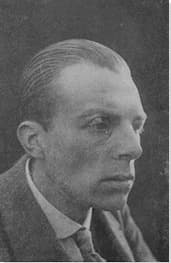Summary of Richard Huelsenbeck
Richard Huelsenbeck is best known as one of the founding figures of the Dada movement, the radical artistic and cultural rebellion born during World War I. His early performances at Zurich's Cabaret Voltaire were notorious for their intensity and disruption, helping define Dada's chaotic, anti-bourgeois tone. He later established Berlin as a vital Dada hub, publishing seminal texts that both documented and provoked the movement. After fleeing Nazi Germany, he reinvented himself as a psychiatrist in New York, where he continued to explore the intersection of mental health and artistic expression. Huelsenbeck's legacy is one of dual mastery: he was both the drummer of Dada's revolt and a thoughtful analyst of the human psyche.
Accomplishments
- Huelsenbeck helped develop sound poetry - a radical form focused on the raw sonic texture of language. His aggressive, rhythmic performances at Dada events, often accompanied by drums and noise, pushed poetry beyond meaning and into pure experience. By stripping language of its conventional logic, he turned performance into a weapon against bourgeois culture and wartime nationalism, making sound itself a political and artistic revolt.
- Huelsenbeck wrote some of the Dada movement's most critical theoretical works, including the Dada Manifesto (1918), Dada Almanach (1920), and En avant Dada (1920). These publications not only documented the movement's goals and activities but also solidified his role as its chief historian and propagandist.
- Huelsenbeck's clinical writing emphasized the therapeutic value of artistic expression, long before "art therapy" existed as a field. Unlike most of his contemporaries, who often pathologized avant-garde art as madness, he validated the creative impulse as a constructive response to trauma and repression.
- His memoir provides an invaluable first-person account of the Dada movement, documenting its figures, tensions, and cultural influence. The book has become a key text for historians, artists, and psychoanalysts exploring 20th-century avant-garde history and the intersection of art and psychology.
The Life of Richard Huelsenbeck
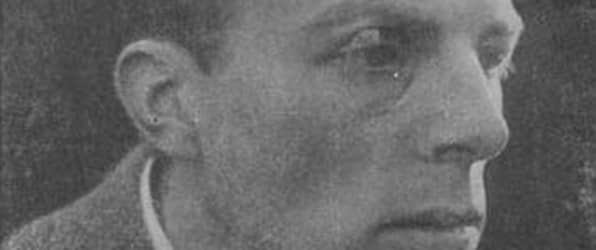
Richard Huelsenbeck brought the beat of rebellion to Dada, pounding out words and rhythms that mocked war, reason, and convention. A restless spirit, he carried Dada's anarchic energy from Zurich to Berlin and beyond, leaving a legacy that fused performance, provocation, and psychological insight.
Important Art by Richard Huelsenbeck
Phantastische Gebete
Phantastische Gebete (Fantastic Prayers) is a collection of sound poems produced by Richard Huelsenbeck and Hans Arp. Sound poems focused primarily on the sonic qualities of language rather than its meaning or semantics. The cover page features a distinctive woodcut by Arp, characterized by its symmetrical, hieratic forms that emphasize the organic patterns of the wood grain as its own symbolic language of elementary symmetry. His approach of cutting along the grain, rather than against it, highlights Arp's aim for "creating a balance between heaven and hell."
The collaboration underscored the interdisciplinary nature of the Dada movement, where visual and literary arts intersected to challenge conventional aesthetics. Phantastische Gebete compiles several texts that Huelsenbeck had performed at the Cabaret Voltaire and the first Dada soirée held at the Zunfthaus zur Waag, a historic guild house in Zurich that served as a center for social and cultural gatherings.
Phantastische Gebete was part of the Collection Dada, a series of small, illustrated volumes designed to disseminate their avant-garde works and ideas in Zurich, starting in July 1916. After the Cabaret Voltaire closed, the Dadaists maintained their productive collaboration by publishing the Collection Dada. Initially released monthly and later in a more sporadic manner. The second edition of Phantastische Gebete was published in 1920 with illustrations by German artist George Grosz, indicating the continued relevance and evolution of Dada ideas from Zurich to Berlin.
Publication by Richard Huelsenbeck and Hans Arp - Kunsthaus Zurich
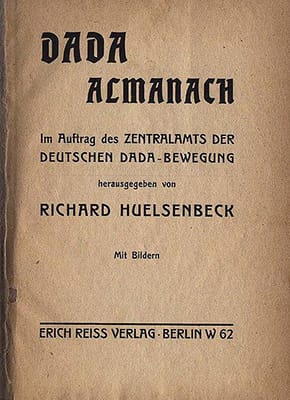
Title page of Dada Almanach
"Dada Means Nothing!" proclaimed Tristan Tzara. Despite this declaration, the most fervent and gifted artists and writers across Europe eagerly joined the movement. The publication of Huelsenbeck's Dada Almanach in Berlin was evidence of this expansion and spread from Zurich to other cultural centers in Europe. Serving as a comprehensive record of the early Dada movement, the almanac was an international endeavor featuring significant contributions from Swiss and French factions.
Originally published in 1920 in both French and German, Dada Almanach is the largest collection of Dadaist texts ever compiled. It includes manifestos (including Huelsenbeck's own), sound poems and absurd prose, photographs and drawings, satirical and anti-bourgeois content, and collage and typography. In the introduction section, Huelsenbeck wrote, "Dada is the great parallel phenomenon to the relativist philosophies of this time; Dada is not an axiom, Dada is a state of mind that, independent of schools and theories, takes possession of the personality, appropriating it as it as it sees fit."
Dada Almanach captured Dada's failures and triumphs, its excesses and seriousness, its absurdity, and above all, the anarchic vitality that was a precursor to much of what followed in art, literature, and cultural disruption. It is considered a landmark of avant-garde publishing and forebear to later experimental literary forms like Fluxus, zines, and postmodern visual poetry.
Publication of Richard Huelsenbeck
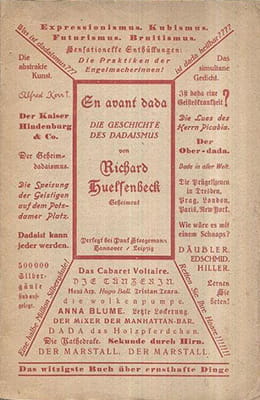
Cover page of En avant dada: die geschichte des Dadaismus
This history of Dadaism was first published in 1920 in Hannover, Leipzig, Wien, and Zurich by German publisher Paul Friedrich Johann Steegemann who was dedicated to publishing avant-garde literature and poetry.
The cover page features an array of bold, red text in varying sizes and fonts, creating a chaotic and visually jarring layout that mirrors the movement's rejection of conventional aesthetics. The text is arranged in a seemingly random manner, with phrases and words positioned at different angles, contributing to the sense of disorder and spontaneity that characterized Dada art.
En avant dada documented and disseminated the ideas and history of Dada as both historical account and manifesto. Huelsenbeck used this book to detail the origins, key figures, and radical approaches of the movement, providing insight into the movement's philosophy while also cementing Huelsenbeck's legacy as one of its pivotal figures.
Publication of Richard Huelsenbeck
Dada Landscape
Primarily known for his writings, Huelsenbeck also produced various artworks throughout his career. His drawings explore abstraction and spontaneity, emphasizing irregular forms and dynamic composition. His Dada Landscape features a surreal environment with vibrant green hills, stark trees, and ambiguous forms juxtaposed against a sky marked by a radiating sun. The title "PAESAGGIO DADA" (Dada Landscape) is scrawled across the top, with Huelsenbeck's name prominently signed at the bottom. The composition is chaotic and unrefined, with bold brushstrokes and a childlike simplicity, reflecting the Dadaist rejection of conventional aesthetics and the embrace of absurdity.
The painting's playful, naïve style invites viewers to reconsider the boundaries of art and the role of the artist, consistent with Dada's original goals. Created in the 1970s, this piece not only illustrates Huelsenbeck's dedication to the Dadaist aesthetic, characterized by a rejection of traditional artistic norms, but also highlights the movement's enduring legacy in promoting creative freedom and intellectual provocation.
Oil on canvas - Private Collection
Cover page of Memoirs of a Dada Drummer
The cover page of Memoirs of a Dada Drummer by Huelsenbeck exemplifies the avant-garde design sensibilities of the Dada movement. The bold red background is juxtaposed with a chaotic arrangement of letters in varying fonts and sizes. The playful typography, which includes the fragmented and scattered arrangement of the title, mirrors the Dadaists' penchant for disrupting conventional forms and highlighting the absurd.
Published in 1991, Memoirs of a Dada Drummer provides a firsthand account of Dadaism from Huelsenbeck, one of Dada's founding voices. It offers insights into the origins and activities of Dada from Huelsenbeck's perspective, capturing the revolutionary spirit that defined the movement. The book has been well-received for its detailed portrayal of both the intellectual and emotional pulse of Dada as well as its internal tensions and explosive reception, providing valuable historical and personal context.
For cultural historians, the book remains an essential resource, offering rare primary insight into the psychology, politics, and artistic upheavals of the early 20th century. As a psychoanalyst, Huelsenbeck offers a rare exploration of the psychology of the artistic creation. His editor, Hans Kleinschmidt, a psychiatrist and art collector with a shared European intellectual background deepens this inquiry. Together, they propose that psychoanalytical perspectives on creativity can shed light not only on the work of individual artists but also on their evolving role in society.
Book written by Richard Huelsenbeck, edited by Hans. J. Kleinschmidt
Biography of Richard Huelsenbeck
Childhood
Richard Huelsenbeck was born on April 23, 1892, in the small town of Frankenau, in Hesse, Germany. During Huelsenbeck's early years, the family moved to Dortmund, Westphalia, where his father worked as a chemist. This move to a more urban environment significantly impacted young Richard, providing him with broader cultural and intellectual exposure.
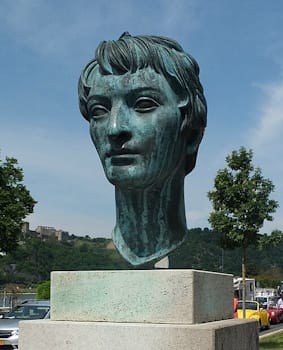
As a child, Huelsenbeck was greatly influenced by the works of German Romantic poet Heinrich Heine. Heine's use of irony and his satirical perspective on society captivated Huelsenbeck, shaping his own literary aspirations. In Dortmund, Huelsenbeck's admiration for Heine grew, and he developed a strong desire to emulate his style, particularly his sharp social critique.
Early Training and Work
At the age of nineteen, Huelsenbeck moved to Munich to pursue medical studies, but his interests soon shifted to German literature and art history. In Munich, he met Hugo Ball, a German author, poet, and co-founder of Dada, who became a significant influence on Huelsenbeck's intellectual development. Huelsenbeck began frequenting the bohemian cafes where Expressionist artists and writers gathered, and through Ball, he started publishing his writings. During the winter semester of 1912-1913, Huelsenbeck studied philosophy at the Sorbonne and contributed as a "Paris correspondent" to the periodical Revolution, an extremely modern and controversial periodical co-founded by Ball and Hans Leybold. Ball's critique of Germany's bourgeois social system reinforced Huelsenbeck's own radical ideas.
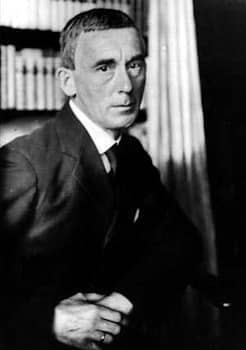
In 1914, Huelsenbeck followed Ball to Berlin, where he continued his literary studies and began publishing in Die Aktion, an influential German literary and political journal founded in 1911. It was known for its support of Expressionism and its anti-war stance. He briefly served in the military during World War I but was discharged due to neuralgia, a stabbing, burning, and often intense pain caused by an irritated or damaged nerve. Both Huelsenbeck and Ball grew increasingly opposed to the war and German nationalism, organizing gatherings to protest the war and commemorate fallen poets.
In 1916, Huelsenbeck went to Zurich at Ball's request, joining the Cabaret Voltaire, a bohemian nightclub that became the birthplace of the Dada movement. The movement was represented as a reaction against the horrors, logic, and nationalism that many believe had led to the war and against conventions of bourgeois art and society as a whole.
On stage, Huelsenbeck often engaged the audience with aggressive, provocative, and ecstatic performances, wielding a rosewood stick and accompanied by a kettledrum. Ball recorded in his diary that Huelsenbeck advocated for stronger rhythms, particularly "Negro rhythm," and performed with an arrogant posture, brandishing his cane and reciting his poems as if they were insults.
Huelsenbeck's performances were notorious for causing significant commotion. While attacking the church, the fatherland, and the German literary canon, his acts were accompanied by drums, roars, whistles, and laughter, demanding an immediate and uninhibited bodily response from the audience. Tristan Tzara, a Romanian-French avant-garde poet, performance artist, and leading promoter of Dada, notably described them as culminating in genuine tumult: "the bass drum is brought in, Huelsenbeck against 200, the fly of his trousers accentuated by the big bass drum and the little bells on his left foot - there's protest there's flattery windows being smashed people killing each other demolishing the place battering each other the police interruption."
Mature Period
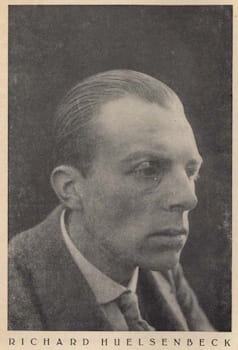
After Ball left Zurich in July 1916, Huelsenbeck developed stomach complaints and returned temporarily to Germany to be with his father who was also suffering ill health. But by early 1917, he was in Berlin, introducing Dada ideas from Zurich and becoming the movement's organizer, promoter, and historian. Berlin became a focal point for the wild graphics and photomontages that emerged from artists to visually characterize the movement. In January 1918, Huelsenbeck delivered the Dada-Rede in Deutschland, the First Dada Speech in Germany, and in April read a Dada manifesto. By the end of 1920, Huelsenbeck had begun chronicling the history of Dada, editing and publishing Dada Almanach, the first Dada anthology, and En avant Dada, subtitled "The History of Dadaism," which indicated his view that the movement was ending.
Although the evidence is incomplete and primarily based on Huelsenbeck's own accounts, it appears that he studied medicine in Berlin, Zurich, and Greifswald. In 1918, he served as a military doctor in Fürstenwalde and then worked with neurologist Adolf Wallenberg in Danzig in 1922. Beginning in 1923, he collaborated with psychiatrist and neurologist Karl Bonhoeffer at the Berlin Charité and served as a doctor on ships traveling to Africa, Asia, and the United States. He also avidly pursued a journalism career, becoming a regular correspondent for various Berlin newspapers and gaining popularity as an author of travel diaries.
Starting in 1933, Huelsenbeck was frequently investigated by Nazi authorities, who regarded both Dada and his role in it as degenerative and subversive. Prohibited from publishing and living in fear of arrest, he fled Germany - first to Switzerland, then to Italy, and finally emigrating to the United States in 1936. Settling in New York, he reinvented himself as Charles R. Hulbeck, M.D., and built a distinguished psychiatric and psychoanalytic practice on Manhattan's Upper East Side.
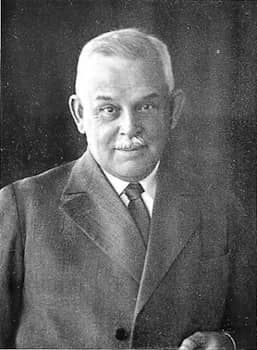
As a clinician, Huelsenbeck specialized in psychoanalysis of trauma, neurosis, and creativity, applying Freudian principles while also drawing on insights from his Dada years. He became affiliated with professional institutions such as the New York Psychoanalytic Society and contributed essays and case studies to journals that bridged psychiatry with broader cultural questions. In his practice, he was known for treating patients with a sensitivity to the creative process, validating artistic expression as a legitimate response to psychic conflict at a time when most clinicians pathologized it.
Huelsenbeck was part of a remarkable generation of physician-poets - including William Carlos Williams - who operated at the intersection of medicine and art. In American Imago, a scholarly journal devoted to psychoanalysis and culture, psychiatrist Aaron Esman later described him as a rara avis - "a rare bird" - who uniquely "lived in two worlds and achieved distinction in both." His later years were marked by publications and lectures exploring the interplay between unconscious drives, social dysfunction, and aesthetic innovation, helping to lay intellectual groundwork for what would later evolve into the field of art therapy.
In addition to his clinical practice, Huelsenbeck published widely under the name Charles R. Hulbeck. His essays appeared in leading psychoanalytic journals such as American Imago and the Psychoanalytic Quarterly, where he wrote on topics ranging from trauma and neurosis to the psychology of artistic creation. In 1949 he published Nervous Diseases and Their Treatment, a medical text aimed at bridging psychiatric theory with practical care. Later articles like The Role of the Unconscious in Creative Writing (1951) and The Problem of Time in Psychoanalysis (1952) show how deeply he wrestled with Freud's legacy, while simultaneously extending it into the cultural and artistic realms.
Through these writings, Huelsenbeck gained recognition not only as a practicing physician but as an intellectual voice within American psychoanalysis. His rare position as both avant-garde provocateur and medical professional gave his work a distinctive authority: he understood the unconscious not just as theory, but as lived reality, having tested its edges in art as well as in therapy. By the end of his career, he was remembered as a figure who helped anticipate the emergence of art therapy and who modeled how creative and clinical worlds could speak to one another.
Huelsenbeck passed away on April 20, 1974, in Muralto, Switzerland.
The Legacy of Richard Huelsenbeck
As one of its foundational pillars, Huelsenbeck was not just a participant but a central architect of the Dada ideology, tone, and historical trajectory. He brought a confrontational and political edge to the movement that was instrumental in articulating its philosophies. His influential writings that defined and portrayed Dada's seminal rebellious, anti-art, and anti-bourgeois spirit, cemented his role as its key theorist and propogandist. Through books like his "Memoirs of a Dada Drummer" (1969), he helped document and preserve the movement's birth and evolution.
As a doctor, Huelsenbeck helped pioneer an integration of psychiatry, psychoanalysis, and avant-garde creativity. This expanded the mental health field's understanding of the unconscious as a source of meaning and transformation. His work anticipated modern alternative therapies such as art and drama therapy, narrative therapy, and Jungian sandplay.
Outside Dada studies, Huelsenbeck remains a contested figure. Some view him as a shrewd opportunist whose literary merit is overestimated, while others praise his work and practices, seeing him as a prototype for later counter-hegemonic figures such as the French Marxist theorist Guy Debord and punk vocalist Johnny Rotten, opposing the dominant cultural, social, and political norms and power structures.
Influences and Connections

-
![Hugo Ball]() Hugo Ball
Hugo Ball ![Edgar Allan Poe]() Edgar Allan Poe
Edgar Allan Poe![Friedrich Nietzsche]() Friedrich Nietzsche
Friedrich Nietzsche- Heinrich Heine
-
![Marcel Duchamp]() Marcel Duchamp
Marcel Duchamp -
![André Breton]() André Breton
André Breton - Guy Debord
- Johnny Rotten
Useful Resources on Richard Huelsenbeck
- Democracy, Law and the Modernist Avant-Gardes: Writing in the State of ExceptionBy Sascha Bru
- DadaBy Kenneth Coutts-Smith
- Phantastische GebeteOur PickBy Richard Huelsenbeck
- Memoirs of a Dada Drummer (The Documents of 20th-century art)Our PickBy Richard Huelsenbeck
- The Dada Almanac (Atlas Arkhive)Our PickBy Richard Huelsenbeck
- Blago Bung, Blago Bung, Bosso Fataka! First Texts of German DadaBy Hugo Ball, Richard Huelsenbeck, Walter Serner
 Ask The Art Story AI
Ask The Art Story AI